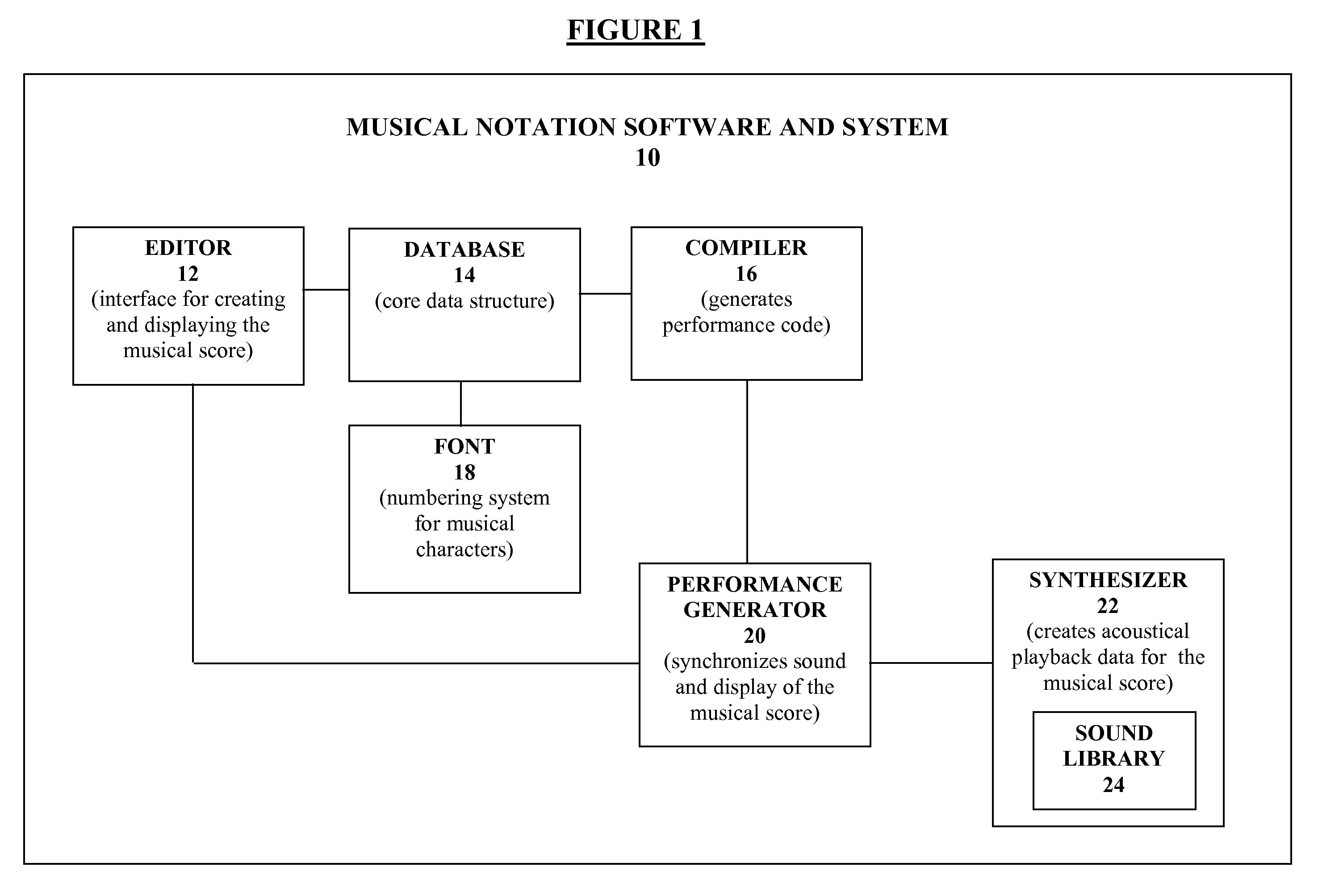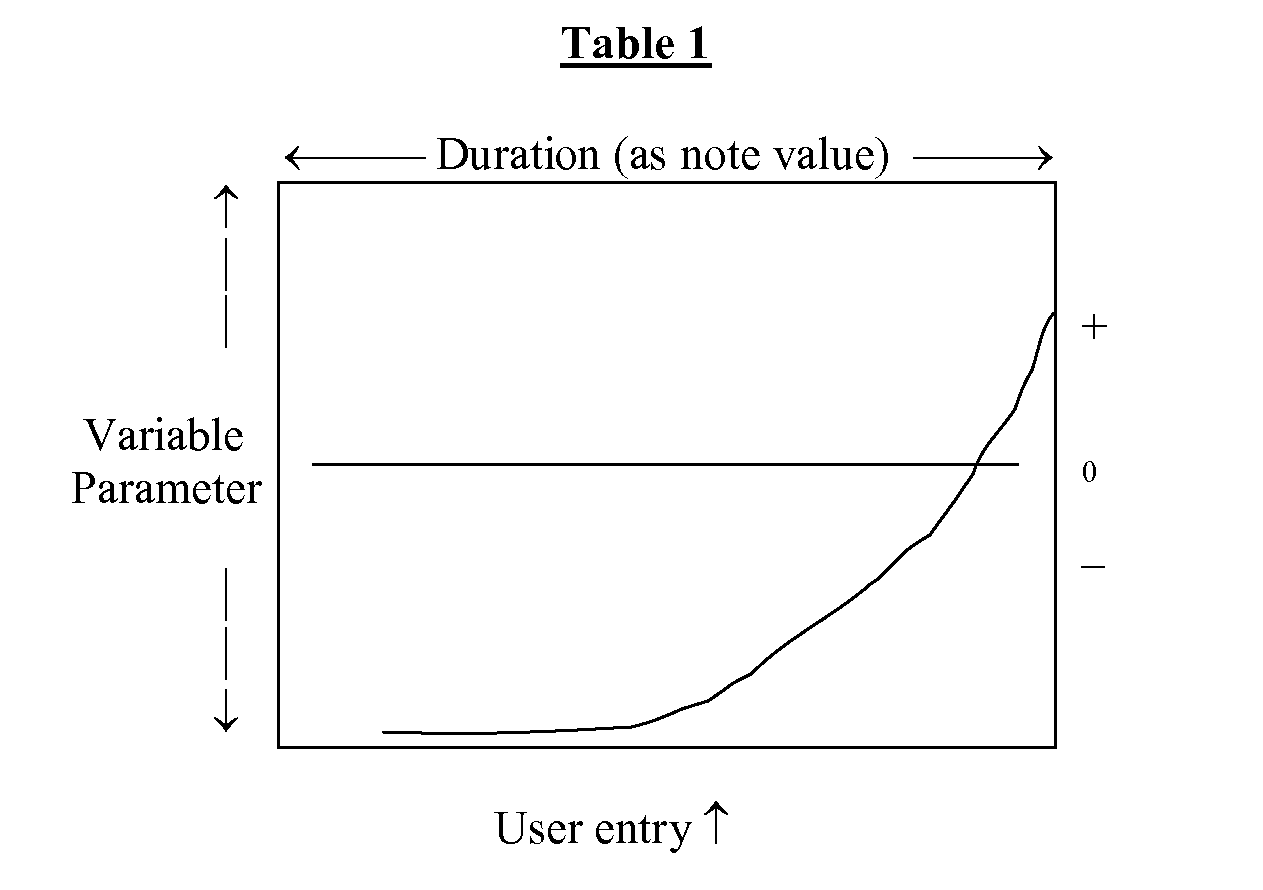Musical notation system
a notation system and music technology, applied in the field of music software, can solve the problems of restricting the use of emulation, limiting its use in this way, and imposing limitations
- Summary
- Abstract
- Description
- Claims
- Application Information
AI Technical Summary
Problems solved by technology
Method used
Image
Examples
Embodiment Construction
[0021] The present invention provides a system that integrates music notation technology with a unique performance generation code and a synthesizer pre-loaded with musical instrument files to provide realistic playback of music scores. The invention integrates these features into a single software application that until now has been achieved only through the use of separate synthesizers, mixers, and other equipment. The present invention automates performance generation so that it is unnecessary for the operator to be an expert on using multiple, specialized pieces of equipment. Thus, the present invention requires that the operator simply have a working knowledge of computers and music notation.
[0022] As shown in FIG. 1, the software and system 10 of the present invention comprises six general components: a musical entry interface for creating and displaying musical score files (the “editor”) 12, a data structure optimized for encoding musical graphic and performance data (the “d...
PUM
 Login to View More
Login to View More Abstract
Description
Claims
Application Information
 Login to View More
Login to View More - R&D
- Intellectual Property
- Life Sciences
- Materials
- Tech Scout
- Unparalleled Data Quality
- Higher Quality Content
- 60% Fewer Hallucinations
Browse by: Latest US Patents, China's latest patents, Technical Efficacy Thesaurus, Application Domain, Technology Topic, Popular Technical Reports.
© 2025 PatSnap. All rights reserved.Legal|Privacy policy|Modern Slavery Act Transparency Statement|Sitemap|About US| Contact US: help@patsnap.com



